Can anyone recommend speakers for playback of primate calls?
10 February 2019 9:01pm
Small scale fishing vessel tracker tech trials
8 February 2019 4:15pm
Responsible Data concerns
8 February 2019 3:16pm
Mobile phones to reduce HWC
8 February 2019 2:31pm
ESP32 capacitive sensing with birds
24 January 2019 2:01am
7 February 2019 2:40pm
Hi Ted,
I don't have experience with that chip either but this sounds like an interesting idea. But zooming out a bit, may I ask what PIT reader are you using?
Thanks,
-harold
7 February 2019 5:21pm
Hi Harold
The existing boarsds use an EM4095 chip. The boards are a 2010 design, done by our department of conservation.
I was thinking of canibilising the old boards - to save costs.
Ted
8 February 2019 5:07am
Hi Ted,
This is all very interesting. The solution you describe seems eminently doable and in fact quite cheap. So doable and cheap that it may behoove one to also ask what the higher level vision is, in order to further constrain the solution.
For instance is there a wider need for this kind of monitoring (e.g. other birds or animals, other localities); or perhaps a need to generate greater outreach or involve new volunteers.
Thanks,
-harold
TECH HUB Open Call: Tech to end wildlife crime
7 February 2019 12:00am
Con X Tech Prize, Round 2: Invasive Species & Blue Sky
6 February 2019 12:00am
OpenCollar for wildlife monitoring launches at The Things Conference
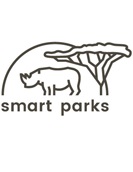 Smart Parks
Smart Parks
6 February 2019 12:00am
ChimpFace: Facial recognition to combat wildlife trafficking
 Jaqueline B. Ramos
Jaqueline B. Ramos
6 February 2019 12:00am
Citizen science conference
31 January 2019 1:21am
5 February 2019 11:42pm
I'll be there - there are several technology sessions that are planned for it...
Muki
SODA Suite -An endeavour to assimilate global soundscapes on a cloud platform.
2 February 2019 6:09am
4 February 2019 4:01pm
Thanks! We also just posted info on the AVISONA 2019 event to the resources page for anyone who missed it and wants to learn more.
Getting up close and personal with Antarctica's orcas
 Jamie Morton
Jamie Morton
4 February 2019 12:00am
UK’s first data trusts to tackle illegal wildlife trade and food waste
 Peter Wells
Peter Wells
31 January 2019 12:00am
Citizen scientists to analyze HWC interventions
16 January 2019 3:11pm
23 January 2019 2:15pm
Hi Femke,
At the Biological records Centre we have been tackling these issues for over 50 years! You are right to point out that with citizen scientists you can collect/review a lot of data in a relativly short period of time. Our iRecord system collect 1 million observations in 2018, and just look at how many people are reviewing images over in the zooniverse (check out snapshot serengeti).
You are also right to point our that without strict protocols, and with varying abilities, the use of citizen scientists can introduce biases, which often leads to the impression citizen science data is of lower quality. There are ways to account for this statistically when you are working on data collected in the field, and for those reviewing images online both the zooniverse and iSpot have systems in place, such as reputation and multiple reviews of a single image to reach consensus.
There is a good report on using citizen science here.
Best,
Tom
23 January 2019 5:10pm
I agree with Tom's comments. A project I work with has used Zooniverse to identify animals in camera trap images, We include a field guide that helps reviewers with making trickier distinctions such as deer versus elk (challenging in partial views with IR images). We require each image to be identified by thirty reviewers before scoring it. That allows us to either be quite confident in an identification or to recognize it requires expert review. We have seen no examples of intentional misidentifications. The biggest problem is coming up with enough images to meet demand--some people will work for hours!
28 January 2019 10:12am
Thanks both for your comments, very interesting indeed! Also great to hear that so many people are eager to get involved in this kind of research and will participate with great enthusiasm.
Bets regards,
Femke
Troubleshooting: Trophy Cam Agressor
26 November 2018 6:53pm
25 January 2019 3:21am
Ok no problem Peter. My colleague Neil Jordan works in Botswana, as does Lucy Ransome (who is heading there in April). Otherwise, do you have a contact I can send it to so they can get it to you?
Cheers and thanks again for the interest.
Rob
26 January 2019 7:24pm
Neil was who I was thinking of. I'm not sure when he plans to next be here.
Peter
26 January 2019 11:39pm
Hi Peter, Ok cool, I'll ask him. I know Lucy is heading back over in a couple of months for sure though, so happy to give it to her for you.
Cheers,
Rob
Community Office Hours: Wednesdays and Fridays
25 January 2019 3:01pm
Avisona 2019: Workshop on Bird Call Recording and Analysis
24 January 2019 12:00am
Drones with thermal imaging
21 January 2019 10:34am
On the horizon: Looking ahead for global conservation
 Sarah Pocock
Sarah Pocock
18 January 2019 12:00am
FLIR and World Wildlife Fund Announce Effort to Combat Rhino Poaching in Kenya
 FLIR Systems, Inc.
FLIR Systems, Inc.
18 January 2019 12:00am
Drone based orangutan tracking
12 January 2019 6:51pm
14 January 2019 11:42am
Hi Dirk,
Your case study is an interesting read, thanks for sharing. In terms of people exploring similar things, there are a few members who you could connect with about different elements of the project. Your project has a few different elements - are there specific things you're interested in hearing how others are handling?
As a start:
- @Sol+Milne is working with Drones and Orangutans, but using them to map nests rather than track individual animals. Case study here, discussion about the project here.
- There's a discussion in this group about aerial platforms for wildlife tracking that might be relevant, which @Albin , @YvanSG , @Rob+Appleby and @emjay are involved in. In a spinoff thread, @emjay has shared the details of WildFInd, a package that produces geo-referenced heatmaps for VHF collared animals - sounds like this could be relevant for your project as you're using VHF implants as well, right? He's invited feedback to help move that project forward, so might be worth checking it out to see if it's relevant and there is overlap between your work.
- @Tomswinfield has been working with drones in Indonesia for the past few years to map forest recovery efforts (case study here - it's a bit dated but gives you an idea what he's exploring).
- @meganossmann has been testing out FLIR’s new Duo Pro R thermal camera as a detection tool for loggerhead sea turtle nests (case study here, discussion here).
This is by no means an exhaustive list of members working in this space, but it's a enough to point you in the direction of some of the recent work being shared here that seems to overlap with what you're working on.
If you haven't already, I'd also recommend having a poke around our drones group as well as there might be some relevant discussions/projects that could be of interest.
Steph
14 January 2019 11:06pm
Hi Dirk,
Sounds like an absolutely fascinating project and well done on all the progress you've made! If you aren't already aware of it, I think the Sensorgnome system people and you have some definite things to chat about. Sensorgnomes use Pis/Beaglebones and RTL-SDRs (or FUNcubes) and custom written software to automatically tracking beacons. The system is primarily used for ground stations, and there's a lot of emphasis on the small Lotek coded VHF tags, but conventional tags also work and there's a lot of interest in the community about drone tracking as you'd expect. Anyway, great stuff and welcome to WILDLABS!
Cheers,
Rob
16 January 2019 11:59am
Thanks all, very useful links, some of them, like the orangutan nest mapping, wildfind, & sensorgnomes, I knew about, some not. Will have a poke :)
[Invite] Digital Naturalism Conference / Residency / Workshop
15 January 2019 9:34pm
Advice for pilot regen project (New Forest, UK)
4 December 2018 12:20pm
15 January 2019 9:04am
I know this might be controversial but why do anything - why not let nature do it's thing and just observe. That way it would establish a baseline and help to formulate acellerator interventions for other sites. Although Knepp has started from a different base it's an interesting story in low intervention rewilding https://knepp.co.uk/
15 January 2019 9:23am
Thanks David,
I understand your point, but we are now collaborating with University research that will be examining (amongst other things) the microbial level, especially in poor and polluted environments. The request still stands, and any relevant collaboration would be welcomed.
All the best.
Tiny birds, tiny tech
15 January 2019 12:00am
Sumatran Forest Type Maps and Data
9 January 2019 5:43pm
14 January 2019 10:26am
Just to throw a couple options out there:
The hanson map, which you can download from:
Global Land Analysis and Discovery
You could also make your own map from the raw satellite data but that is a bit more involved.
Tom
The Ecosulis Rewilding Tech Challenge
 Ecosulis
Ecosulis
14 January 2019 12:00am
HWC Tech Challenge Update: Testing our prototype thermal cameras in the Arctic
 Arribada Initative
Arribada Initative
9 January 2019 12:00am
31 March 2023 1:24pm
Conservation X Labs is hiring!
8 January 2019 12:32am
Wild pigs crop damage assessment and movement using GIS and drones
28 December 2018 5:15am
3 January 2019 9:57am
Dear Sdorji,
Thanks for sharing! Are you specifically looking for monitoring methods? In that case, you could probably also find relevant information outside of the HWC group, perhaps in groups focussing on camera trapping, the use of drones etc on the other WILDLABS pages. Do you know about the Bhutanese national HWC strategy? Does this also focus on wild boars? Or is your initiative not connected to that?
Best regards,
Femke
5 January 2019 8:24am
Dear Femke,
I am actually looking for studying the crop damages using drones and also tracking the movements, may be using GPS collars. But I do not actually know about these tools and have not used. So just thought if I can get methods and procedures. It is great that you already know about our national strategy. Yes, I am the core member of Bhutanese national HWC strategy and we have recently completed drafting. I have worked on wild pigs chapter and one strategy there is crop damage assessments and movements study. We are also proposing crop insurance but without a concrete data, there is nothing we can do about crop insurance. So I am thinking to collect basic information such as crop damages and movements of wild pigs.
Locally fabricated electric/solar fencing widely spreading in Bhutan
28 December 2018 5:57am
3 January 2019 9:57am
Dear Sdorji,
Thanks for sharing and your request for suppport from this group! I was thinking that perhaps @Mohan+Raj could share with you some insights from India? He has also developed fences and is involved in the technologies to improve monitoring and maintanance.
Best regards,
Femke
5 January 2019 8:18am
Dear Femke,
Thank you for your email. I hope I can hear from Mohan Raj. Electric fencing is one area where it can play very important role in human wildlife conflict management. In Bhutan, there are now about 3636 km and we are already experiencing some issues such as sustainability, wooden poles, nelgect during off-season, etc. I hope we can learn from each other and see areas for collaboration.
Thanks.
Sangay

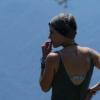
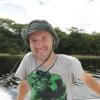






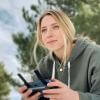






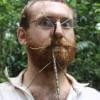

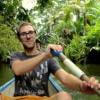

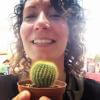
9 February 2019 9:55am
Hi Don,
I agree, it's very intriguing.
I think they're using the Remora. It looks like a solar powered GPS tracker. I couldn't find much more information.
Thanks,
-harold